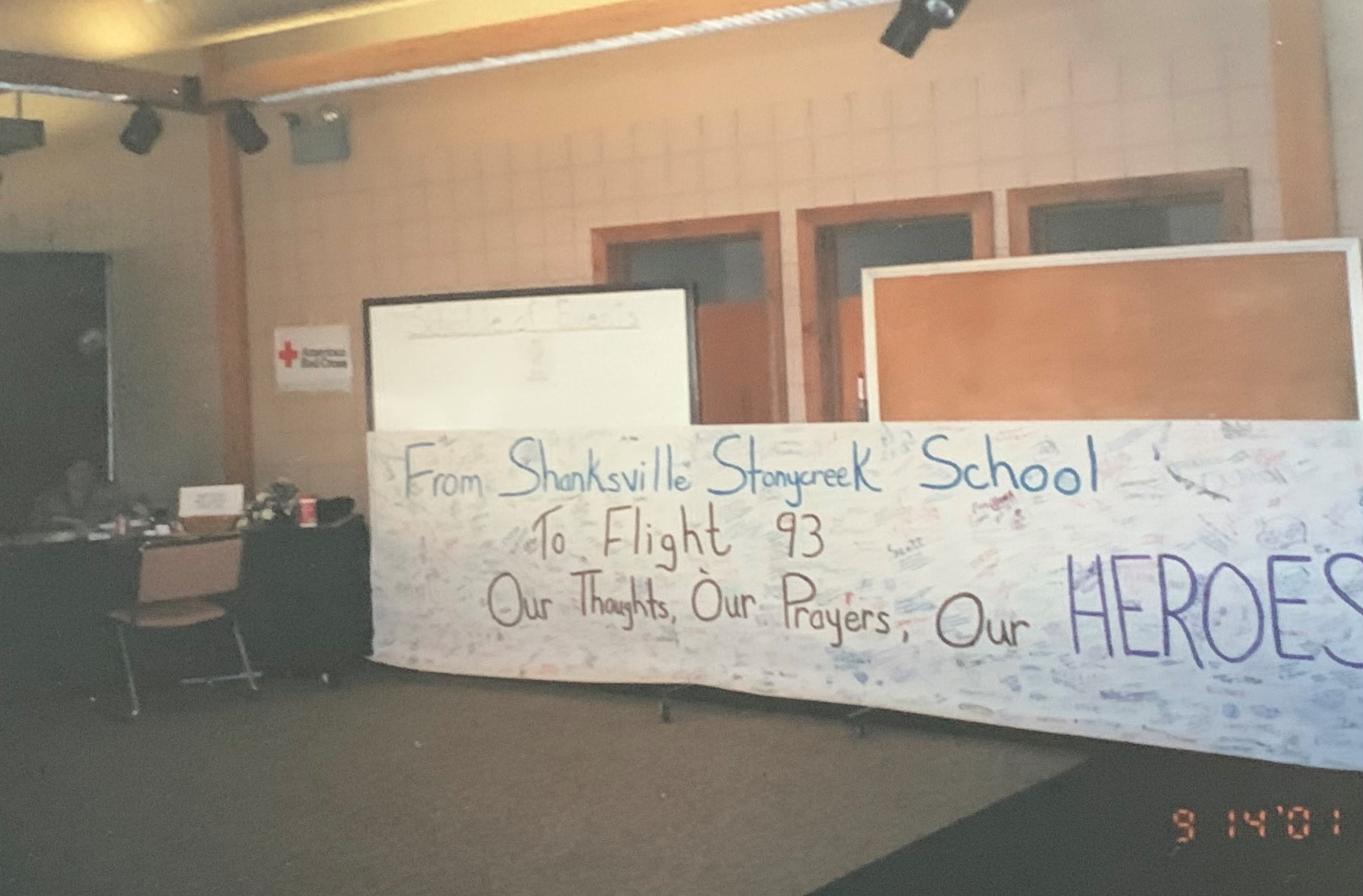
Amy Gabriel couldn’t find a song on the radio the morning of September 11, 2001. She was driving four hours to Shanksville, Pennsylvania in a Red Cross vehicle to respond to the Flight 93 tragedy. There was no cassette or CD player in the vehicle, so she had nothing to distract herself from her thoughts.
“I couldn’t find one darn song on the radio,” she said. “Suddenly sports casters were reporting world events, radio DJs that are normally having contests and making people laugh were suddenly brought into this profound moment in history.” The song she finally found, “Let it be” by the Beatles, means something different to her after that drive.
Gabriel, who now serves as a Cadre Manager in Public Assistance at FEMA, had been deployed by the Red Cross that morning to serve as the assistant director of operations for the Flight 93 aviation disaster response. United Airlines Flight 93 was the only one of the hijacked planes that day that did not hit it’s intended target. The plane was veered off its course after the crew and passengers tried to take back control of the plane – and instead crashed in a little field in Shanksville.
Over the next few weeks, Gabriel would end up leading the planning and implementation of three memorial services. One was for the community of Shanksville, so they could express their grief for what had occurred in their community. The other two were for those who had lost family members or friends. These services were attended by Laura Bush, Lynne Cheyney and the entire Pittsburgh Steelers Team. Gabriel also hosted two trips to the site for family members and employees of United Airlines to visit the memorial that had been set up there.
“Sites of disasters such as those become hallowed grounds, so site visits are a normal part of the process for those who are grieving,” Gabriel said.
During these site visits, she would be on the buses with family members en route to the site and people would line up along the side of the road.
“People were waiting for these buses to pass,” she said. “And as we passed each intersection, you would see salutes go up from those who were in service to our country in some way - police, emergency responders, military personnel. And then you would see people, average American citizens, holding up beautiful signs showing support to these families who had lost so much, and to America. The support they had during this terrible tragedy that had happened in their small farm community is I think for me, one of the more emotional parts.”
When the bus passed the Shanksville Elementary School, they saw that each and every window was covered with signs of support. Gabriel said these efforts positively impacted those aboard the bus. The silence turned into weeping, appreciation and conversation.
Another moment that brought relief was when a grieving family member demanded to speak to the Pittsburgh Steelers, who were attending the memorial service. The person she had lost had been a Steelers fan and she wanted to tell the team exactly what they had done wrong in their last game and why they had lost. “It was lighthearted and there were hugs and there was a little bit of laughter in the middle of such sorrow,” Gabriel said.
These moments impacted Gabriel on a more personal level too. “You can’t respond to an event like that and not have it change you to some degree,” she said.
At the time, Gabriel was a young parent of a two-year-old boy. Leaving your child on a day like that, she said, when everybody just wanted to be with their family, was really tough.
“Every one of those responders couldn’t embrace their family because they were going in the opposite direction,” She said. “Instead of going home for comfort, they were leaving their families to meet the needs of the nation at that point.”
Now her toddler is grown and has a grown sister too. In the years since the attacks, Gabriel continued to respond to the tragedies our country has faced, from devastating disasters to the Sandy Hook School Shooting tragedy. Her role now at FEMA is to help guide the future generation of emergency managers.
No matter what is going on in the world or their lives, each year on September 11, Gabriel says she hears from those she worked with during the response. “No matter where our lives or careers have taken us, we come together as if we were never apart,” she said. “That is the bond an event of that magnitude brings.”


